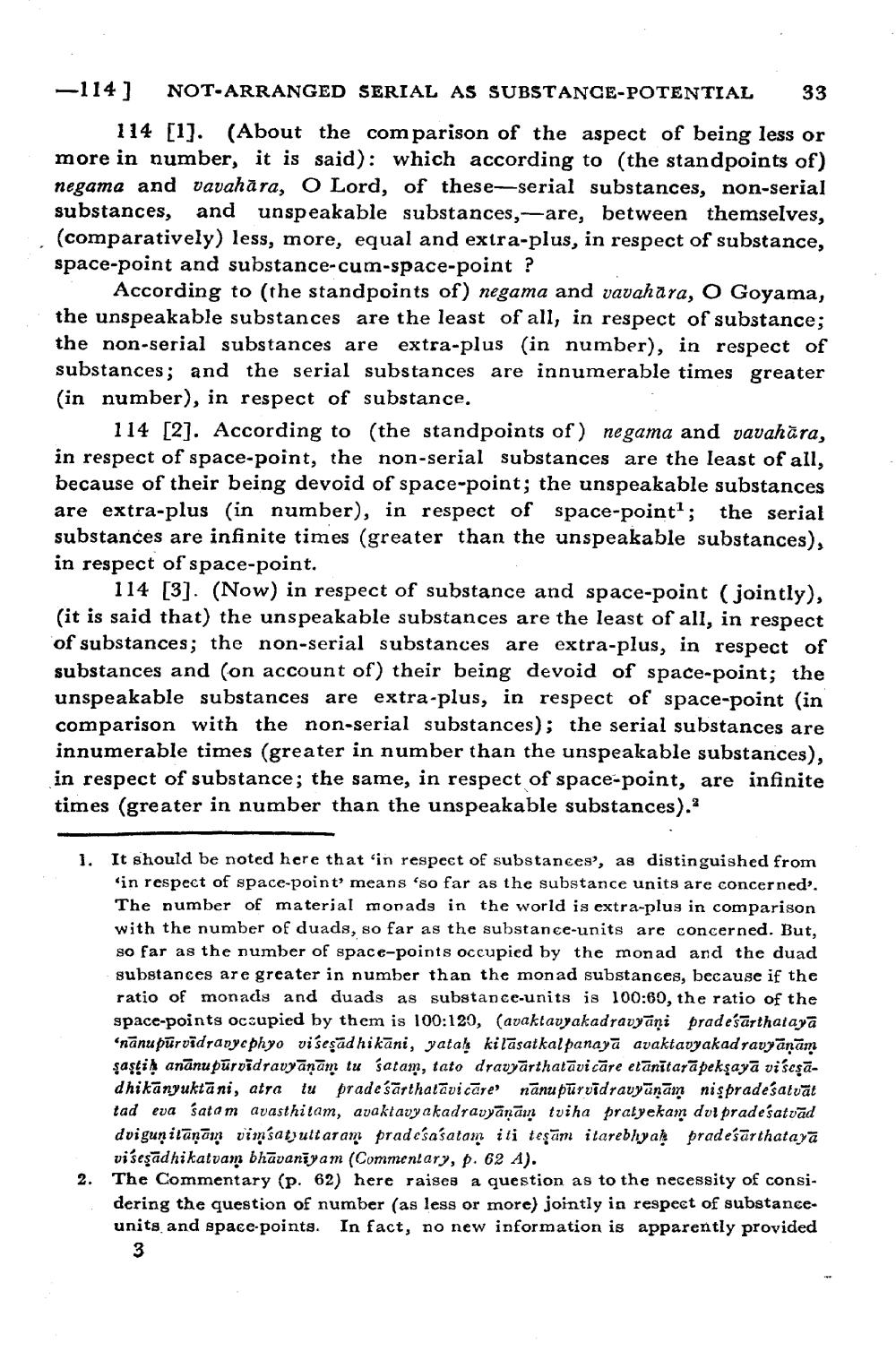________________
-114]
NOT-ARRANGED SERIAL AS SUBSTANCE-POTENTIAL
33
114 [1]. (About the comparison of the aspect of being less or more in number, it is said): which according to (the standpoints of) negama and vavahara, O Lord, of these-serial substances, non-serial substances, and unspeakable substances,-are, between themselves, (comparatively) less, more, equal and extra-plus, in respect of substance, space-point and substance-cum-space-point ?
According to (the standpoints of) negama and vavahara, O Goyama, the unspeakable substances are the least of all, in respect of substance; the non-serial substances are extra-plus (in number), in respect of substances; and the serial substances are innumerable times greater (in number), in respect of substance.
114 [2]. According to (the standpoints of) negama and vavahara, in respect of space-point, the non-serial substances are the least of all, because of their being devoid of space-point; the unspeakable substances are extra-plus (in number), in respect of space-point1; the serial substances are infinite times (greater than the unspeakable substances), in respect of space-point.
114 [3]. (Now) in respect of substance and space-point (jointly), (it is said that) the unspeakable substances are the least of all, in respect of substances; the non-serial substances are extra-plus, in respect of substances and (on account of) their being devoid of space-point; the unspeakable substances are extra-plus, in respect of space-point (in comparison with the non-serial substances); the serial substances are innumerable times (greater in number than the unspeakable substances), in respect of substance; the same, in respect of space-point, are infinite times (greater in number than the unspeakable substances).2
1. It should be noted here that 'in respect of substances', as distinguished from in respect of space-point' means 'so far as the substance units are concerned'. The number of material monads in the world is extra-plus in comparison with the number of duads, so far as the substance-units are concerned. But, so far as the number of space-points occupied by the monad and the duad substances are greater in number than the monad substances, because if the ratio of monads and duads as substance-units is 100:60, the ratio of the space-points occupied by them is 100:120, (avaktavyakadravyani pradesarthataya 'nanupūrvēdravye phyo viseṣadhikāni, yataḥ kilāsatkal panaya avaktavyakad ravyāṇām şaṣṭiḥ anānupūrvīdravyānām tu satam, tato dravyarthatavicāre etānītarāpekṣayā viseṣādhikanyuktāni, atra tu pradesarthatavicāre nanupūrvidravyānam nisprade'satvāt tad eva satam avasthitam, avaktavy akadravyāṇām tviha pratyekam dvi pradesatvād dvigunitanam vimsatuttaram pradesa'satam iti teşam itarebhya pradesarthataya visesadhikatvam bhavaniyam (Commentary, p. 62 A).
The Commentary (p. 62) here raises a question as to the necessity of considering the question of number (as less or more) jointly in respect of substanceunits and space-points. In fact, no new information is apparently provided
3
2.




